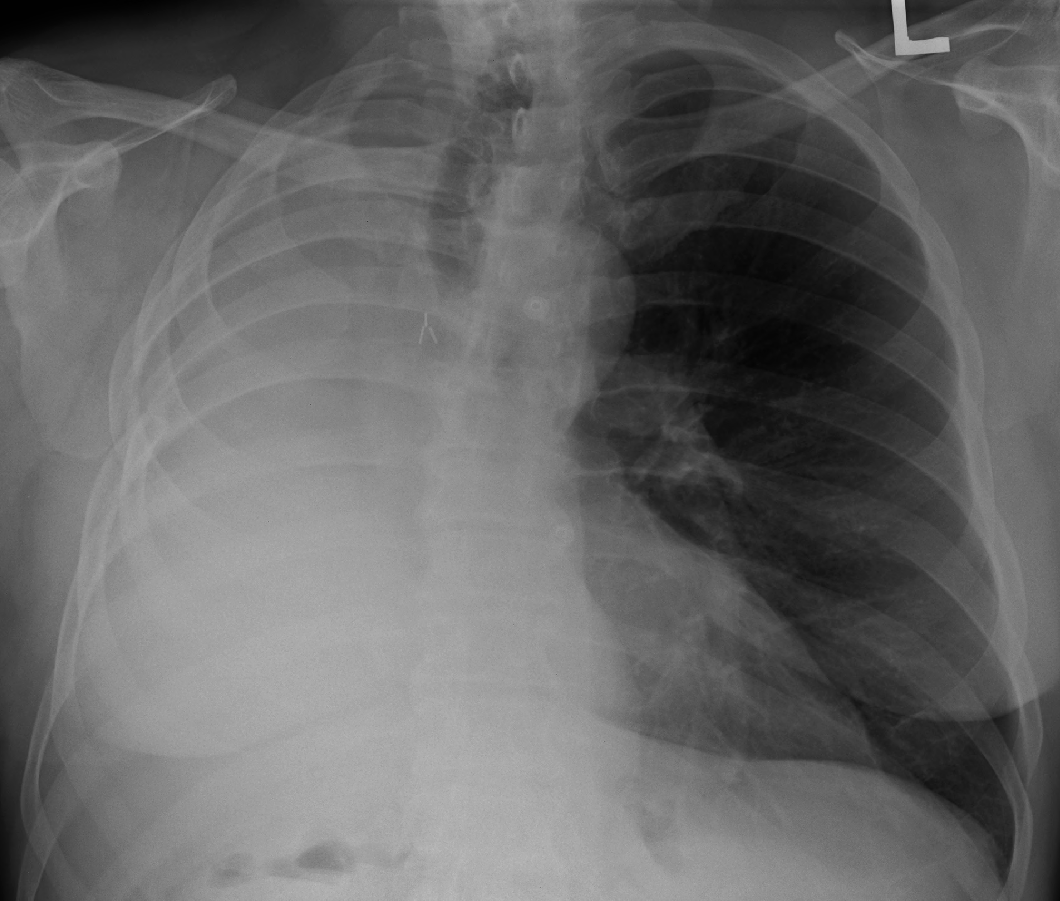Pneumonectomy on:
[Wikipedia]
[Google]
[Amazon]
A pneumonectomy (or pneumectomy) is a

surgical
Surgery ''cheirourgikē'' (composed of χείρ, "hand", and ἔργον, "work"), via la, chirurgiae, meaning "hand work". is a medical specialty that uses operative manual and instrumental techniques on a person to investigate or treat a pat ...
procedure to remove a lung
The lungs are the primary organs of the respiratory system in humans and most other animals, including some snails and a small number of fish. In mammals and most other vertebrates, two lungs are located near the backbone on either side of ...
first successfully done in 1933 by Dr. Evarts Graham. This is not to be confused with a lobectomy or segmentectomy, which only removes one part of the lung.
There are two types of pneumonectomy, simple and extra pleural. A simple pneumonectomy removes just the lung. An extra pleural pneumonectomy take away part of the diaphragm, the parietal pleura, and the pericardium on that side as well.
Indications
The most common reason for a pneumonectomy is to removetumour
A neoplasm () is a type of abnormal and excessive growth of tissue. The process that occurs to form or produce a neoplasm is called neoplasia. The growth of a neoplasm is uncoordinated with that of the normal surrounding tissue, and persists ...
ous tissue arising from lung cancer
Lung cancer, also known as lung carcinoma (since about 98–99% of all lung cancers are carcinomas), is a malignant lung tumor characterized by uncontrolled cell growth in tissues of the lung. Lung carcinomas derive from transformed, mali ...
. Other reasons can arise are a traumatic lung injury, bronchiectasis, tuberculosis, a congenital defect, and fungal infections.
Contraindications
Tests
The operation will reduce the respiratory capacity of the patient and before conducting a pneumonectomy, survivability after the removal has to be assessed. If at all possible, a pulmonary function test (PFT) should be done prior. It has been found that forced expiratory volume in one second (FEV1) and diffusion capacity of the lungs (DLCO) provides the best indicator of survival. Other tools can be used to assess effectiveness as well such as cardiopulmonary exercise testing to measure maximal oxygen consumption (Vo(2) max), stair climbing, shuttle walk test, and a 6-min walk testPathologies
If someone has severe valvular disease, severe pulmonary hypertension, or poor ventricular function or if cancer has spread from the lungs into the other intra-abdominal structures, ribs, or contralateral hemithorax, it is contraindicated.Anatomical Changes
After a pneumonectomy is performed changes in the thoracic cavity occur to compensate for the altered anatomy. The remaining lung hyperinflates as well as shifting over along with the heart towards the now empty space. This space is full of air initially after surgery, but then it is absorbed and fluid eventually takes its place.History
Pioneering dates
* 1895: first pneumonectomy in multiple stages byWilliam Macewen
Sir William Macewen, (; 22 June 1848 – 22 March 1924) was a Scottish surgeon. He was a pioneer in modern brain surgery, considered the ''father of neurosurgery'' and contributed to the development of bone graft surgery, the surgical treatm ...
on a patient with tuberculosis and emphysema
Emphysema, or pulmonary emphysema, is a lower respiratory tract disease, characterised by air-filled spaces ( pneumatoses) in the lungs, that can vary in size and may be very large. The spaces are caused by the breakdown of the walls of the alv ...
* 1912: first anatomical dissection lobectomy by Hugh Morriston Davies
Hugh Morriston Davies (10 August 1879 – 4 February 1965) was a Welsh thoracic surgeon, the first to perform a dissection lobectomy in the world, and the first to perform a thoracoplasty in the United Kingdom, both firsts achieved in 1912.
Early ...
* 1918: first successful lobectomy, by Harold Brunn
* 1931: first successful pneumonectomy in two stages by Rudolph Nissen
Rudolph Nissen (sometimes spelled Rudolf Nissen) (September 5, 1896 – January 22, 1981) was a surgeon who chaired surgery departments in Turkey, the United States and Switzerland. The Nissen fundoplication, a surgical procedure for the treatment ...
on a patient with crush injury to the thorax
The thorax or chest is a part of the anatomy of humans, mammals, and other tetrapod animals located between the neck and the abdomen. In insects, crustaceans, and the extinct trilobites, the thorax is one of the three main divisions of the c ...
* 1933: first successful single-stage total pneumonectomy by Graham
Graham and Graeme may refer to:
People
* Graham (given name), an English-language given name
* Graham (surname), an English-language surname
* Graeme (surname), an English-language surname
* Graham (musician) (born 1979), Burmese singer
* Clan ...
and Singer
* 1939: first segmentectomy, by Churchill and Belsey
See also
*Medical ventilator
A ventilator is a piece of medical technology that provides mechanical ventilation by moving breathable air into and out of the lungs, to deliver breaths to a patient who is physically unable to breathe, or breathing insufficiently. Ventilators ...
* List of surgeries by type
Many surgical procedure names can be broken into parts to indicate the meaning. For example, in gastrectomy, "ectomy" is a suffix meaning the removal of a part of the body. "Gastro-" means stomach. Thus, ''gastrectomy'' refers to the surgical remo ...
References
External links
* {{Respiratory system surgeries and other procedures Lung cancer Pulmonary thoracic surgery Surgical oncology Surgical removal procedures Thoracic surgical procedures